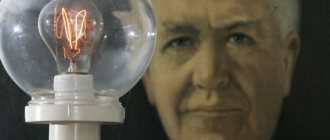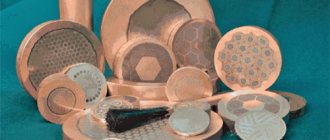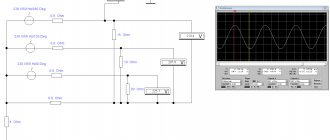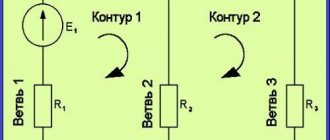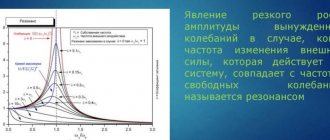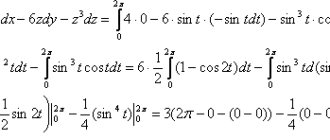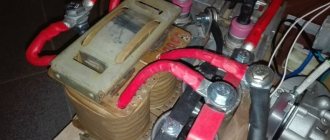1891 A handsome, tall, dark-haired man steps onto the stage in a lecture hall at Columbia University in New York. He takes a copper ball in each hand and touches the terminals of a high-voltage, high-frequency transformer (today known as a Tesla coil). 250,000 volts run across the surface of his body. As one journalist put it, the experimenter appeared before the audience “in the radiant glory of myriad tongues of electric flame.”
Nikola Tesla takes notes in his laboratory in Colorado Springs as a man-made electrical storm rages overhead. He worked in this laboratory in 1899 and here he built the largest Tesla coil in the world
After some time, he moves away from the device, the electrical aura dissipates, and the audience sees that he is unharmed. Who is this man and why did he take such a risk?
prepared a translation of the material.
Translation from
This desperate daredevil's name was Nikola Tesla. He invented the alternating current motor and demonstrated its safety with himself. For the past few years, the Edison Electric Light Company has been campaigning against him and his inventions in an effort to maintain their market share.
Tesla's friends at Westinghouse Electric Company were winning this battle. In response, Edison's group attempted to challenge the safety of AC systems by publishing sensational stories in the press. Tesla hoped that this demonstration would overcome the black PR.
It was the late 1880s, electricity was uncharted territory like the Wild West, and no one knew which system would ultimately win.
In 1876, Edison got tired of endless disputes with the owners of the premises in Newark and decided to build his own laboratory in the village of Menlo Park, New Jersey, 40 km from New York
Very often, technological disagreements (that is, the battle between two inventors eager to distribute their inventions as widely as possible) are resolved rationally. One invention may cost less than another, a second may be safer, and a third meets the standards set by engineers or authorities and therefore sells well.
However, from time to time disagreements cannot be resolved. Tesla and Edison fought over the future of power transmission. This battle had it all: shocking demonstrations, schoolboy-worthy personalization, and even attempts to outlaw alternating current. In the end, alternating current won. Rational design and low cost of mass distribution - that's the whole secret.
Alternating current
Before you can learn to use alternating current, you must first obtain it. In general, physicists have known about alternating current for a long time (since the discovery of electromagnetic induction) and Tesla did not discover it as such, but then everyone believed that alternating current was simply “garbage” that was unlikely to be used somehow. Tesla had a different opinion and immediately saw the full potential of alternating current.
Direct current flows continuously in one direction; AC current changes direction 50 or 60 times per second and can vary voltage to high levels while minimizing power loss over long distances. Later, the AC voltage can be lowered to be used in factories or homes. Tesla realized that the future belonged to alternating current.
Tesla described his motors and electrical systems in the paper "A New System of Alternating Current Motors and Transformers," which he presented at the American Institute of Electrical Engineers in 1888. It was then that George Westinghouse became interested in Tesla's developments, and one day he visited his laboratory and was amazed at what he saw. Nikola Tesla built a model of a polyphase system from step-down and step-up AC transformers, as well as an AC motor. Thus began the partnership between Wetsinghouse and Tesla. Nikola Tesla later received 40 patents for his inventions in the United States, and Westinghouse bought them all to provide himself with wealth and America with alternating current.
Below we will talk about these machines and how a multiphase power supply system was introduced in the USA.
Various definitions
Types of DC
Period, term DC
used to refer to power systems that use only one polarity of voltage or current, and to refer to a constant, zero, or slowly varying local average value of voltage or current.[9] For example, the voltage across a DC voltage source is constant, as is the current through a DC current source. A constant current solution is an electrical circuit in which all voltages and currents are constant. It can be shown that any stationary voltage or current waveform can be decomposed into the sum of a constant current component and a time-varying zero-mean component; The DC component is defined as the expected value or average value of voltage or current over time.
Although DC means "constant current", DC often means "constant polarity". By this definition, DC voltages can vary over time, as can be seen in the raw output of a rectifier or fluctuations in the voice signal on a telephone line.
Some forms of DC (such as those produced by a voltage regulator) have little or no voltage variation, but may still have power and current output variations.
Alternator
An alternator is an electrical machine that is an integral part of Tesla's polyphase power supply system, which will be discussed below. A generator creates alternating current using mechanical work (for example, generators installed on dams using water falling on their blades).
We will not explain the principle of operation of the generator. Watch the video below if you want to understand more.
Tesla's alternator (another name for alternating current generator) was superior to all others for the simple reason that it was truly effective in practice. Tesla invented his generator while still in his 2nd year and even then he approached his teachers with the idea of using alternating current, but everyone dismissed his ideas as crazy. Some professors even simply laughed at his inventions.
In 1882, Tesla works in Paris and creates the first working prototype of his generator.
Arriving in the USA in 1884, Tesla went to the then famous inventor and businessman in the field of electricity, Thomas Edison, and got a job with him. Along the way, Tesla offered Edison his ideas for using alternating current, but Edison believed that he was crazy for thinking that alternating current could be used in any way. It even got to the point that Tesla, not understanding Edison’s sarcasm, thought that he would receive a large sum from Edison if he made several dozen specific inventions to order. Tesla made them, and Edison said that he was joking, and Tesla recommended that he learn to understand American humor.
In 1891, Tesla received a US patent for the world's first alternator.
Alternator 1891
Tesla Patent for Alternating Current Generator
Tesla polyphase generator with a power of 500 hp. (about 370 kW) at the Westinghouse exhibition
Engine of progress. 8 inventions of Thomas Edison
In 1869, the first ticker machine in history was released - a device for transmitting stock quotes over telephone or telegraph wires. Using a ticker machine, current stock quotes were printed on a continuous paper tape at a speed of one character per second. It was from this moment that the names of companies in stock exchange reports began to be abbreviated - such abbreviations are called tickers. Commons.wikimedia.org/H. Zimmer
Edison's next successful project was the quadruplex telegraph. Thomas improved the existing duplex circuit, and after that Edison's telegraph was capable of transmitting four messages on one wire. Commons.wikimedia.org / Library of Congress
In the mid-1870s, Thomas Edison invented the mimeograph, a relatively small screen-printing device for printing books in small to medium-sized quantities. The mimeograph consisted of an electric pen and a copy box. Commons.wikimedia.org/Early Office Museum
By the end of the 1870s, Thomas Edison assembled his first phonograph, which the inventor worked on for about 20 years. The device introduced by Edison could record and play back music and speech, be used as a talking watch, and also serve as a “telephone accessory.” Commons.wikimedia.org/Levin C. Handy
One of Thomas Edison's most striking inventions was the carbon filament incandescent lamp - his version of the lamp could burn for about 40 hours. In addition, Edison also invented the rotary switch. It was from this moment that lamps began to replace gas lighting devices on the market. Commons.wikimedia.org/William J. Hammer
Thomas Edison is also the inventor of the Kinetoscope. The device implemented the principle of frame-by-frame film display. When scrolling at 15 frames per second, viewers felt as if the objects in the image were moving. Commons.wikimedia.org/Edison Manufacturing Company
In 1889, Thomas Edison introduced his electric chair. When US authorities were looking for a humane alternative to hanging, the inventor was able to convince the public that his device met the needs of the times. At the same time, Edison himself sought to show the destructiveness of alternating current, which his competitors used in their products. Commons.wikimedia.org/George Eastman House
The famous inventor also had a hand in the invention of rechargeable batteries - batteries that can be recharged multiple times. At the end of the 19th century, the nickel-cadmium battery was invented by the Swede Waldemar Jungner, but until they reached the United States, Edison's iron-nickel batteries were popular. For example, they were installed on the Detroit Electric electric car. Commons.wikimedia.org/Edison Storage Battery Company
AC motor
An alternating current motor or asynchronous machine is another stage in the development of ideas for the use of alternating current. We have already discussed the alternating current generator, which means we get electricity, but what to do with it next? We don’t have machines that run on alternating current! Tesla invented them.
Tesla's 1888 electric motor patent
In the 1880s, many inventors tried to invent working versions of alternating current motors, but they failed. Galileo Ferraris is engaged in theoretical research into the creation of alternating current motors and comes to the erroneous conclusion that they simply cannot be efficient and commercially successful. This added motivation to inventors around the world; it sounded like a challenge to create an efficient AC motor. Tesla answers this challenge and demonstrates his first version of an alternating current engine in 1887, and in 1887 he improves his model by releasing a second car.
One of Tesla's original electric motors from 1888.
The main reason why rational use of AC motors seemed impossible was that they were single-phase. Tesla justified theoretically and proved practically that it is possible not to limit oneself to one phase, but to make two or more phases.
The picture below shows schematically the structure of two- and three-phase AC motors:
Tesla later invents and patents many modified motors and AC motors. All these patents, as stated above, are sold by Tesla to Westinghouse.
Two-phase AC electric motor from the Westinghouse collection.
4-phase AC electric motor from the Westinghouse collection.
Polyphase AC electric motor from the Westinghouse collection.
When every percentage counts
Despite significant progress in the field of current rectification, equipment for converting alternating current into direct current and vice versa still costs a lot of money. So large that the construction of AC networks, even taking into account the increased consumption of material for wires, is much cheaper. Regardless of the length of the line, the starting price of a high-voltage DC line necessarily includes the cost of two converters at the beginning and end of the line - large and very expensive devices produced by only a few companies in the world, including Toshiba. This equipment accounts for up to half the cost of the network.
But as the length of the line increases, the cost of an AC line increases faster than that of a DC line. This is due to the complexity of the HVAC line - to transmit the same power to HVDC, you need half as many conductors of smaller diameter, which means half as many supports, which themselves cost a lot and require extremely expensive installation. With a line length of about 600 km, the cost of HVDC and HVAC is equal, but over long distances, about 2000 km, HVDC is much cheaper than HVAC, by about 30-40%, and this is hundreds of millions of dollars in savings.
HVDC and HVAC costs intersect on a line about 600 km long. Further, HVDC becomes noticeably more profitable. Source: wdwd/Wikimedia Commons
For every 1000 km of line, losses in HVDC are 2-3%, and the most modern equipment can reduce this parameter to 1%. HVAC losses can be as high as 6%. Even in the most efficient AC networks with the best equipment, losses will be 30-40% greater than in HVDC. A few percent of total power seems to be tolerable nonsense? When it comes to networks transmitting several gigawatts, each percent turns into dozens of wasted megawatts that could be used to power a small city. Not to mention lost profits.
Multiphase power supply system
Tesla noticed that Edison's DC power stations were inefficient, and Edison had already built up the entire Atlantic coast of the United States with them. To overcome the disadvantages of direct current, it was necessary, according to Tesla's idea, to use alternating current. Such a system is called multiphase because motors and generators have several phases (see explanations above).
Edison lamp
Edison's lamps were weak and inefficient when using direct current. This entire system had one major drawback in that it could not transport electricity over distances of more than 3 km due to its inability to vary the voltage to the high level required for long distance transmission. Therefore, DC power plants were installed at intervals of 3 km.
Scheme of operation of multiphase power supply systems
Alternating current, as written above, could reach high voltages and therefore could be transmitted over vast distances (go outside the house and look at the nearest high-voltage power lines, this is it).
When Edison learned that he had such a powerful competitor, he realized that he could lose his DC empire. This is exactly how the war began between Westinghouse and Tesla against Edison, which will be called the war of currents. Edison began strenuously trying to discredit Tesla's invention by showing that alternating current was more dangerous to life than direct current.
It is also worth noting that when Tesla came to the USA, he first offered his developments to Edison, but he called it all nonsense and madness.
Edison shocked animals with alternating current in public to infuriate them and prove that this type of current was dangerous. One day Edison learned about a doctor's idea about using alternating current to kill people. Realization was not long in coming. This is how the electric chair was invented, which was first used on William Kemmler, who was guilty of murdering his mistress.
For a long time, Edison could not come up with a name for his new invention, but he liked the word “Westinghouse” most of all, although none of them, as we now see, caught on.
Scheme
A DC circuit is an electrical circuit that consists of any combination of constant Voltage sources, constant Current sources and resistors. In this case, the voltages and currents in the circuit do not depend on time. The specific voltage or current of a circuit is independent of the past values of voltage or current in the circuit. This means that the system of equations representing a DC circuit does not include integrals or derivatives with respect to time.
If a capacitor or inductor is added to a DC circuit, the resulting circuit is not, strictly speaking, a DC circuit. However, most of these circuits have a constant current solution. This solution gives the voltages and currents in the circuit when the circuit is in a steady state of constant current. Such a scheme is represented by a system of differential equations. The solution to these equations usually contains a time-varying or transient part, as well as a constant or steady-state part. It is this part of the steady state that is the constant current solution. There are some circuits that do not have a constant current solution. Two simple examples are a constant current source connected to a capacitor and a constant voltage source connected to an inductor.
In electronics, a circuit that is powered by a constant voltage source, such as a battery, or the output of a constant current source, is usually called a direct current circuit, even if it is meant that the circuit is powered by direct current.
Tesla coil or transformer
Tesla invented his coil around 1891. At that time, he was repeating the experiments of Gernich Hertz, who had discovered electromagnetic radiation three years earlier. Tesla decided to run his device in conjunction with a high-speed alternator he was developing as part of an improvement to the arc lighting system, but he discovered that the high-frequency current overheated the steel core and melted the insulation between the primary and secondary windings in the Ruhmkorff coil, which was the default in the Hertz's experiments. To eliminate this problem, Tesla decides to change the design so that there is an air gap between the primary and secondary windings, instead of insulating material. Tesla made it so that the core could be moved to different positions in the coil. Tesla also installed a capacitor, which is usually used in such installations, between the generator and its primary winding coil, to prevent the coil from burning out. By experimenting with the settings of the coil and capacitor, Tesla discovered that he could take advantage of the resulting resonance between them to achieve higher frequencies.
In the Tesla transformer coil, the capacitor, after striking a short spark, was connected to a coil of several turns (primary coil), thus forming a resonant circuit with an oscillation frequency, usually 20-100 kHz, determined by the capacitance of the capacitor and the inductance of the coil.
The capacitor was charged to the voltage required to break the air spark gap during the input linear cycle, which reaches approximately 10 kilovolts using a linear transformer that is connected across the air gap. The linear transformer was designed to have a higher than normal leakage inductance (a parameter reflecting the non-ideality of the transformer) to withstand a short circuit occurring while the gap remained ionized, or for a few milliseconds until the high frequency current disappeared.
The spark gap was adjusted to break down at a voltage slightly less than the peak output voltage of the transformer to maximize the voltage across the capacitor. The sudden current passing through the spark gap causes the primary resonant circuit to resonate at its resonant frequency. The ring primary winding magnetically couples energy to the secondary winding over several RF cycles until all the energy that was originally in the primary winding is transferred to the secondary winding. Ideally, the gap then stops conducting current (quenching), trapping all the energy in the oscillating secondary circuit. Usually the gap begins to grow again, and the energy from the secondary transmissions returns to the primary circuit within a few more RF cycles. The energy cycle can be repeated several times until the spark gap finally weakens. As soon as the gap stops conducting current, the transformer will begin to charge the capacitor. Depending on the spark gap breakdown voltage, it may fire many times throughout the AC cycle.
A more prominent secondary winding with significantly more turns of finer wire than the secondary winding was positioned to intercept part of the primary winding's magnetic field. The secondary system was designed to have the same resonance frequency as the primary, using only the stray capacitance (unwanted capacitive coupling) of the winding itself to ground, as well as any terminal located at the top of the secondary winding. The lower end of the long secondary winding must be grounded.
Applications of Tesla Coils
Applications can be divided into practical and purely decorative. Practical applications of Tesla coil current are found in radio control, radio and wireless power transmission to power various devices (for example, light bulbs). Tesla's generator also discovered an unexpected application in medicine. Arsene D'Arsonval used the currents created by the generator for physiotherapeutic effects on the surface of the skin and mucous membranes of various human organs. The current passed through the surface layers of the skin and had a tonic and healing effect. Tesla coils are also used to operate gas-discharge lamps and detect leaks inside vacuum systems.
But Tesla coils have become much more widespread in the field of special effects and decorations, because the discharges created by a Tesla transformer look extremely impressive and beautiful.
You can see an example of how a Tesla coil works in the video:
It is also interesting to observe the musical properties of these coils, which are achieved by changing the frequency:
Interestingly, at one time in the 20th century they tried to sell Tesla coils as an effective way to protect your car from theft:
Also, similar reels are used in various centers to entertain visitors and try to captivate young people with the beauty of physical effects, as well as in attractions:
Recommendations
- Andrew J. Robinson, Lynn Snyder-Mackler (2007). Clinical electrophysiology: electrotherapy and electrophysiological studies
(3rd ed.). Lippincott Williams and Wilkins. paragraph 10. ISBN 978-0-7817-4484-3. - N. N. Bhargava and D. K. Kulshrishtha (1984). Basic Electronics and Line Circuits
. Tata McGraw-Hill Education. paragraph 90. ISBN 978-0-07-451965-3. - National Electric Lighting Association (1915). Electric Meter Handbook
. Trow Press. paragraph 81. - Mel Gorman. "Charles F. Brush and America's First Electric Street Lighting System." History of Ohio
.
Kent State University Press. Ohio Historical Society. 70
: 142.[
permanent dead link
] - "Alessandro Giuseppe Antonio Anastasio Volta - grants.hhp.coe.uh.edu." Archived from the original on 08/28/2017. Retrieved 2017-05-29.
- Jim Breithaupt, Physics, Palgrave Macmillan - 2010, p. 175
- "Pixii Machine Invented by Hippolyte Pixie, National High Magnetic Field Laboratory." Archived from the original on 2008-09-07. Retrieved 2008-06-12.
- First form of electric light History of the carbon arc lamp (1800s–1980s)
- Roger S. Amos, Jeffrey William Arnold Dummer (1999). Newnes Electronic Dictionary
(4th ed.). Newnes. paragraph 83. ISBN 0-7506-4331-5.
Wireless lighting
In 1891, Tesla improved the wave transmitter invented by Hertz, which was needed for radio frequency energy supply, by converting it into a lighting system consisting of gas-discharge lamps.
That same year, he demonstrated his invention at Columbia College.
When we say that lighting is wireless, we do not mean radio waves, we are talking about electrostatic induction.
In 1893, a world exhibition is held in Chicago, where Tesla demonstrates his invention. The lamps were not only wireless, but also fluorescent.
In 1894 a new achievement. He manages to light a phosphorus incandescent lamp in his laboratory using the resonant method of mutual induction.
True, such a lamp could not find wide commercial application, but the resonant inductive coupling method is now used everywhere in electronics.
Edison and incandescent lamps
If you needed a smaller source of soft electric light, arc lamps were no longer an option. Edison quickly realized that he could sell small light bulbs as a replacement for the gas lamps of that time. In 1878 he abandoned his work on the telephone and phonograph and plunged headlong into the world of electric lighting, about which he had known nothing until that moment.
An 1879 lamp with a carbon filament that glows when current is passed through it. PHOTO: SSPL, GETTY
To create a smaller lamp, Edison decided to turn to the incandescent effect (the so-called glow when heated). When the critical temperature is reached, the object emits bright light. At first, Edison experimented with platinum. This metal has a high melting point, so the inventor suggested that a current could be passed through a platinum thread and make it glow.
However, he immediately discovered that oxygen was also involved in the process. The platinum burned out almost immediately. Then Edison placed a metal thread in a vacuum glass flask. This solved the combustion problem, but platinum was too expensive and also had low electrical resistance.
This meant that such a lighting system would require expensive and very thick copper cables. Fortunately, Edison solved this problem by simply increasing the resistance in each lamp and connecting them in parallel circuits.
Now it was necessary to find a metal with a sufficiently high resistance. Edison and his team spent several months selecting and testing materials until they discovered that lamp black, used in telephone transmitters, was best suited for this purpose. This is how the opening moment was described in one of the newspapers:
“One night, while sitting in his laboratory working on an unfinished project, Edison began mindlessly rolling a piece of compressed lamp black between his fingers until he rolled it into a thin thread. One chance glance gave him the idea that he could try to heat it up. A few minutes later he conducted a completely successful experiment, although the results did not surprise him. Further tests helped to find a suitable form and composition of the substance, and the result of each experiment confirmed that the inventor was on the right track.”
Subscribe to our Facebook page so as not to miss anything important from Ukrainian IT news
